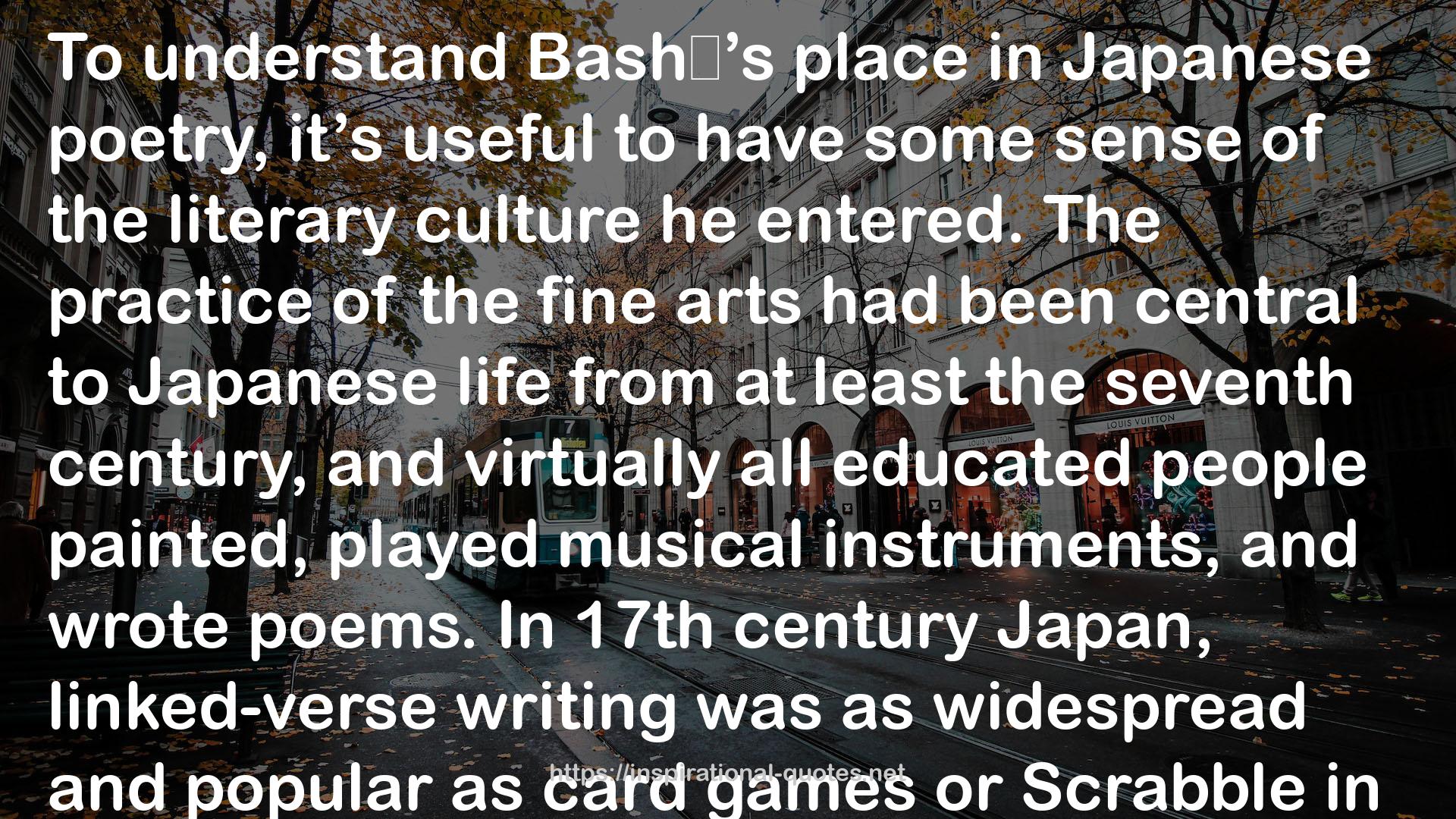" To understand Bashō’s place in Japanese poetry, it’s useful to have some sense of the literary culture he entered. The practice of the fine arts had been central to Japanese life from at least the seventh century, and virtually all educated people painted, played musical instruments, and wrote poems. In 17th century Japan, linked-verse writing was as widespread and popular as card games or Scrabble in mid-20th-century America. A certain amount of rice wine was often involved, and so another useful comparison might be made to playing pool or darts at a local bar. The closest analogy, though, can be found in certain areas of online life today. As with Dungeons and Dragons a few years ago, or Worlds of War and Second Life today, linked verse brought its practitioners into an interactive community that was continually and rapidly evolving. Hovering somewhere between art-form and competition, renga writing provided both a party and a playing field in which intelligence, knowledge, and ingenuity might be put to the test. Add to this mix some of street rap’s boundary-pushing language, and, finally, the video images of You-Tube. Now imagine the possibility that a “high art” form of very brief films might emerge from You-Tube, primarily out of one extraordinarily talented young film-maker’s creations and influence. In the realm of 17th-century Japanese haiku, that person was Basho. "
― Jane Hirshfield , The Heart of Haiku
